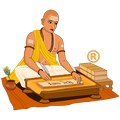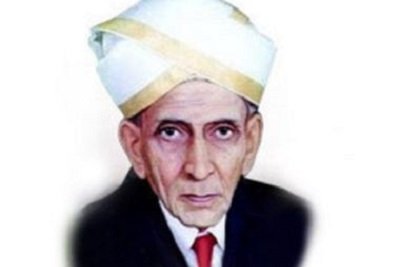












Sir Mokshagundam Vishveshvarya is popularly known as Sir MV or the "Father of Indian Engineering". He was also known as "Father of Modern Mysore State" (now Karnataka). Vishveshvarya Jayanti is celebrated on September 15 to mark the birth anniversary of Sir MV. He was the most illustrious and greatest engineer of India. The day is observed to recognise his superlative achievements in the field of engineering and planning. Because of his exceptional foresight and implementation of various technically advanced projects, on the same day, Engineers Day is celebrated in India.
In Karnataka, his home state, the celebrations of his birth anniversary are more profound and prevalent owing to his immense contributions in the development of the State. Tributes are paid in front of his statue or portrait in engineering institutions, societies, forums and public and private sector companies working in the engineering domain.
Sir MV was born on September 15, 1861, into a Telugu Brahmin family in Muddehahalli village, Chikkaballapura district of erstwhile Mysore State, now Karnataka. He completed his graduation from Central College, Bangalore with a degree of Bachelor of Arts. Later, he attended College of Engineering, Pune and received Licentiate in Civil Engineering in the year 1881.
He started his career with PWD, Bombay and subsequently worked in various capacities before serving as the Dewan of Mysore during 1912-18. He also served as board member and council member of various national and international organizations. In recognition of his innumerable and unparalleled contributions and technological foresight, the government of India offered him with its highest civilian award Bharat Ratna in 1955 and British Indian Empire with the title of Knight Commander of the Order of Indian Empire in 1915. He died at the age of 100 years on April 12, 1962, in Bangalore, India. His memorial lies in his home village Muddehahalli.
Sir MV's major contributions are in the field of civil engineering. He brought in innovative technological advancement in taming and utilizing excess water particularly addressing the flood mishap the country was grappling with in early 1900 and inadequacies in the irrigation system. To study the modern technologies, he visited countries like Japan, USA, and many European and African countries with the idea of implementing those technical advancements in his own country. Many times he would take these trips at his own expenses. In the year 1906-07, the government of India sent him to Aden, a port city in Yemen, to study water supply and drainage system.
As chief engineer of the project, he designed and administered the construction of Krishna Raja Sagara dam (KRS) or Brindavan Gardens, one of the biggest dams in India. Build during 1911-1938 at the meagre budget of 10.34 million rupees, it dispenses water for irrigating the land of around 120,000 acres and also provides drinking water to millions of citizens of Mysore and Bangalore.
He invented and patented the design of automatic floodgates to be installed on dams' reservoirs in order to allow excess inflow safely without letting the level of water rise. These gates were first installed at Khadakvasla Reservoir near Pune in 1903. Later, the same system was installed at the Tigra dam in Gwalior and Krishna Raja Sagara dam (KRS).
He is credited with the modernization of The Mysore Iron and Steel Works, Bhadravathi and also saved the plant from the brink of closing down. It incurred heavy losses before Sir MV assumed the post of chairman, transforming it into not just a profitable entity but biggest undertaking of South India of that time period. The plant now known as Vishveshvarya Iron and Steel Plant is a unit of Steel Authority of India Limited.
He developed Block System of Irrigation in 1899 to regulate the use of water for irrigation purposes more efficiently. The mechanism was employed in Deccan canals and is still effective.
He constructed flood control reservoirs for controlling the floods caused by river Mahanadi in Orissa in the year 1938. The mechanism effectively used to channelize the water storage for hydropower and irrigation purposes.
He used a system known as Collector Wells for ensuring the supply of clean drinking water to Sukkur, Sindh, British India.
He is also credited for making the city of Hyderabad flood free. He was approached by the government of Hyderabad seeking his expertise for tackling the flood catastrophe of 1908. After comprehending the scenario, he suggested construction of two reservoirs to contain the flood and embankments of the river.
Sir MV also authored many books including Memoirs of My Working Life; Planned Economy for India; A Brief Memoir of My Complete Working Life; Nation Building: A Five-Year Plan for the Provinces; Reconstructing India; Unemployment in India: Its Causes and Cure amongst many others.
During his tenure with the government of Mysore State and as Dewan of Mysore, he set up Mysore Sandal Oil Factory and the Mysore Soap factory, Mysore University, State Bank of Mysore, public libraries in Mysore and Bangalore, Mysore Chamber of Commerce, Kannada Sahitya Parishad also known as Kannada Literary Academy, University Vishveshvarya College of Engineering (founded in 1917 as Government Engineering College, Bangalore), University of Agricultural Science, Sri Jayachamarajendra Polytechnic Institute, century club and women's clubs amongst others. He also planned and designed Jayanagar in South Bangalore.